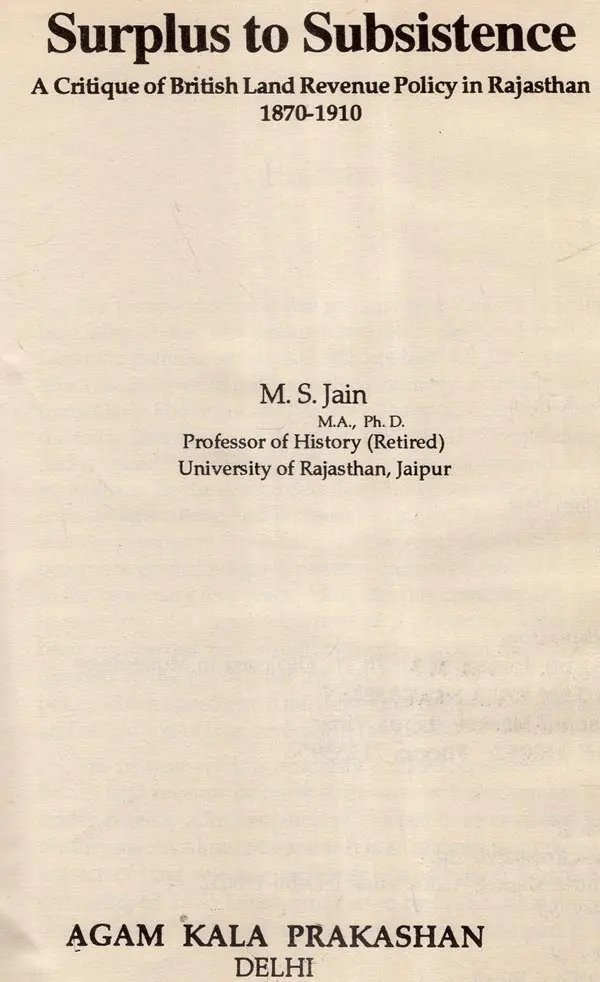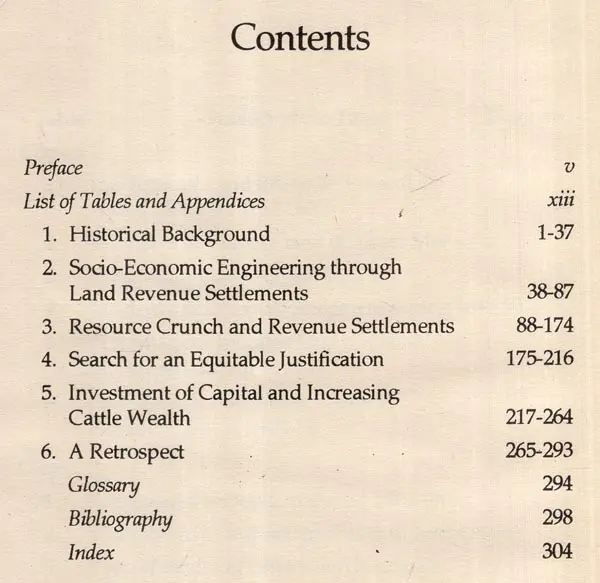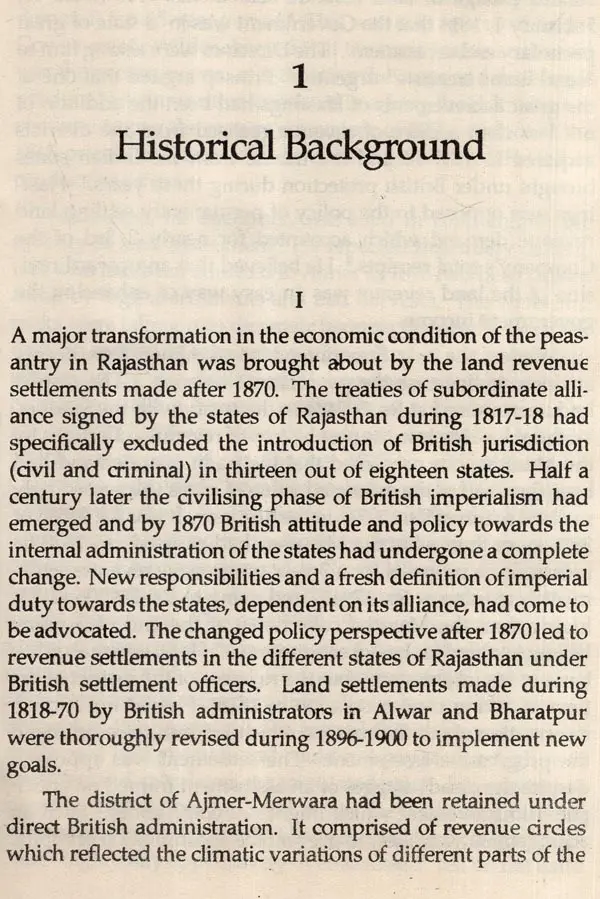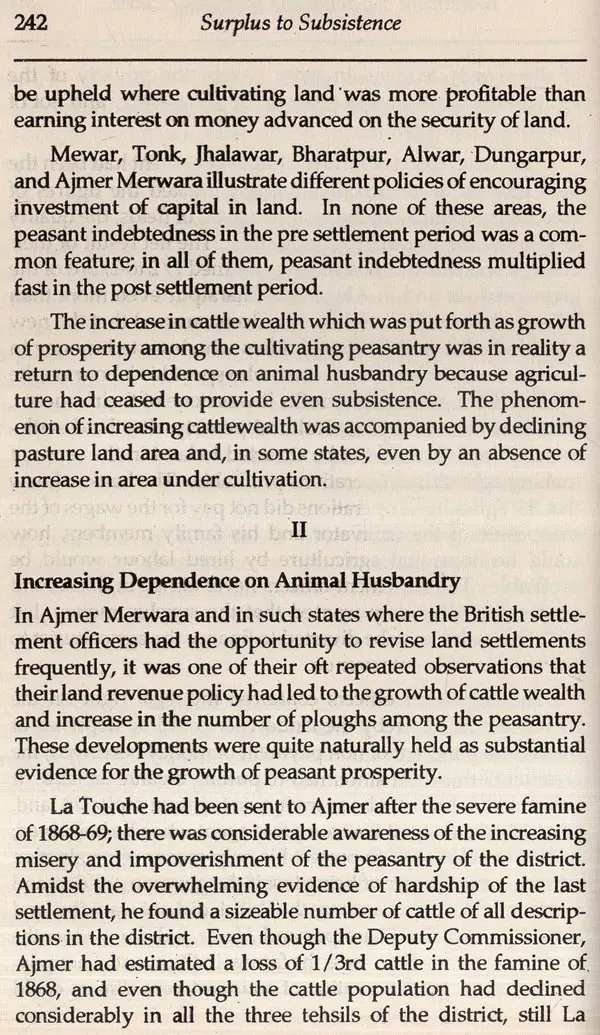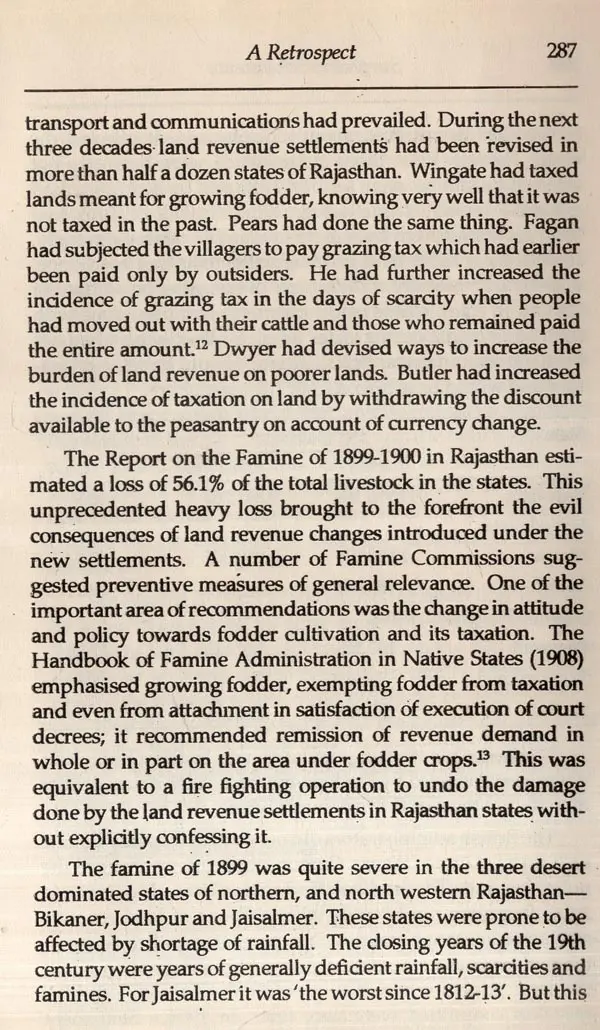About the Book The book is a study of British land revenue policy in operation in the states of Rajasthan. Prior to a change in British perception around 1870, the region had been credited with a prosperous and con tented peasantry. Half a century later when the British had succeeded in intro ducing land revenue settlements in a ma jor part of the region, the peasantry had been reduced to the level of subsistence. It had been brought about by British im position of an iniquitous land revenue demand during periods of actual admin istrative control established during re gency or financial difficulty of the state concerned.
The demand said to be based on 34th gross produce was actually two thirds or more. This was achieved by changing the natural and artificial classes of soil, by arbitrarily enhancing the irrigated assessed area, by assuming a higher than the actual yield, and by evaluating the gross pro duce at a rate higher than actually re ceived by the cultivator. This excessive demand was accompanied by a policy of regressive taxation which subjected the irrigated land to a lighter and the dry barani land to a heavier taxation. The inequity was compounded when the Brit ish also introduced a new intermediary class of landed proprietors and provided it with invisible 50% land revenue as profit rent built in the structure. This mopping up of the accumulated reserves was virtu ally drain of wealth from the Indian states.
About the Author Dr. M.S. Jain has retired as Professor of History from the University of Rajasthan, Jaipur in 1989 after 39 years of teaching and research at Aligarh, Kathmandu (Nepal) and Jaipur. His knowledge of Urdu, Persian, Arabic, Nepali, modem Rajasthani, and Hindi besides English has helped him to study the original sources of his varied areas of interest. He has participated in national and international seminars and confer ences in India, Europe and U.S.A. He has four published research works to his credit besides a host of research papers. His published research works are:
1. The Aligarh Movement: its origin and development, 1858-1906 (Agra, 1965)
2. The Emergence of a new Aristocracy in Nepal 1837-58 (Agra, 1972)
3. Muslim Political Thinkers of Modern India (Jaipur 1973) (in hindi) 4. Concise History of Modern Rajasthan (New Delhi, 1993)
Preface The prosperous trade and commerce of Rajasthan, at the beginning of the 19th century, had been conceded by Tod. Different political agents and officers had, till 1870, written about the prosperous and contented peasantry in various states, particularly Bharatpur and Mewar. The special censuses con ducted at Bharatpur and Alwar, in 1867 and 1872 respectively, had revealed that less than 50% population was dependent on agriculture. By the second decade of this century, the depend ence on agriculture had increased to about 70% population, and the prosperity was nowhere to be seen. Agriculture had become overwhelmingly dependent on rainfall; famines stared in the face every few years. How did this come about? Any inquiry into the impoverishment of a peasantry which had been prosperous half a century earlier, would naturally be directed to the operational aspects of the new land revenue policy which transformed the traditional system of assessment and realisation of land revenue in the khalsa.
Book's Contents and Sample Pages
